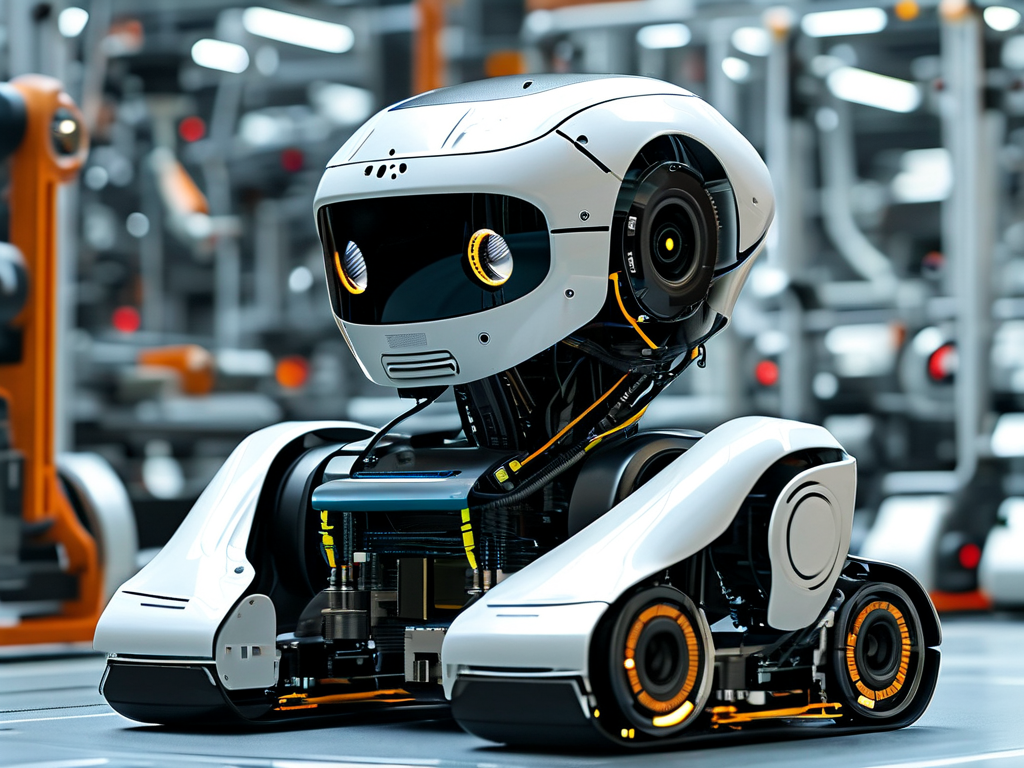Autonomous Mobile Robots (AMRs) represent a transformative leap in industrial automation and smart logistics. Unlike traditional automated guided vehicles (AGVs) that rely on fixed paths or magnetic tracks, AMRs utilize advanced sensing, mapping, and decision-making algorithms to navigate dynamically. This article delves into the core technical principles driving AMR innovation and its real-world applications.
At the heart of AMR functionality lies simultaneous localization and mapping (SLAM). This technology enables robots to create real-time maps of unfamiliar environments while tracking their own position within those spaces. By integrating data from lidar, cameras, and ultrasonic sensors, AMRs build 3D representations of their surroundings. For instance, a warehouse robot might combine lidar's precision for measuring distances with visual cameras to identify pallet markings, ensuring millimeter-level accuracy during material handling.

Path planning algorithms form another critical component. Modern AMRs employ adaptive routing systems that balance efficiency with collision avoidance. When a robot detects an unexpected obstacle – say, a fallen box or moving forklift – it recalculates routes using probabilistic roadmaps or A* search algorithms. This dynamic adjustment capability is exemplified in hospitals where delivery AMRs reroute around emergency equipment without human intervention.
The control architecture of AMRs follows a hierarchical structure. Low-level controllers manage motor torque and wheel velocity, while mid-layer systems process sensor inputs for stabilization. At the highest level, task-oriented AI modules interpret workflow demands. Consider an e-commerce fulfillment center: AMRs coordinate through a centralized system that assigns picking tasks based on real-time inventory data, optimizing routes to minimize energy consumption.
Power management innovations extend AMR operational endurance. Regenerative braking systems capture kinetic energy during deceleration, while smart charging protocols enable opportunistic top-ups during idle periods. A manufacturing plant might deploy AMRs that autonomously dock to wireless charging pads when battery levels drop below 20%, ensuring continuous 24/7 operations.
Human-robot interaction (HRI) interfaces have become increasingly sophisticated. Natural language processing allows workers to verbally instruct AMRs in production lines, while gesture recognition enables intuitive control in noisy environments. In automotive assembly plants, technicians use hand signals to direct AMRs carrying heavy components, maintaining workflow fluidity without physical control panels.

The integration of edge computing addresses latency challenges in large-scale deployments. By processing sensor data locally rather than relying entirely on cloud servers, AMRs achieve faster response times. A practical implementation involves warehouse robots analyzing camera feeds onboard to identify damaged packages instantly, triggering alerts without network dependency.
Looking ahead, swarm intelligence represents the next frontier. Researchers are developing coordination algorithms that enable AMR fleets to self-organize like insect colonies. In agricultural applications, drone-AMR hybrids could collaboratively map fields and distribute seeds, with individual units automatically adjusting patterns based on terrain data from neighboring robots.
Despite these advancements, challenges persist. Signal interference in metal-rich environments remains a hurdle for sensor reliability, prompting the development of hybrid navigation systems that combine visual markers with radio frequency identification (RFID). Cybersecurity also gains prominence as AMRs become network-dependent, driving the adoption of blockchain-based authentication protocols in logistics systems.
From automotive manufacturing to pharmaceutical distribution, AMRs are redefining operational efficiency. A pharmaceutical cold chain case study revealed 40% faster vaccine transportation using temperature-controlled AMRs that maintain precise climate conditions while navigating complex hospital corridors. Such applications underscore the technology's transformative potential across industries.
As 5G connectivity and AI co-processors become standard, future AMRs will likely incorporate predictive maintenance capabilities through vibration analysis and thermal imaging. These robots could preemptively schedule service before component failures occur, minimizing downtime in critical operations. The convergence of AMR technology with digital twin systems further enables virtual testing of navigation strategies in simulated environments before physical implementation.
In , the technical foundation of AMRs combines cutting-edge sensing, adaptive algorithms, and intelligent control systems. By continuously evolving through machine learning and hardware advancements, these autonomous platforms are poised to revolutionize material handling, disaster response, and precision agriculture, establishing themselves as indispensable tools in the Industry 4.0 landscape.









